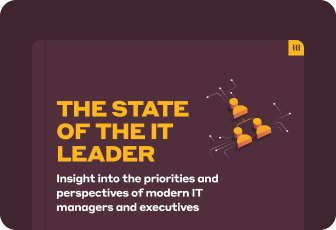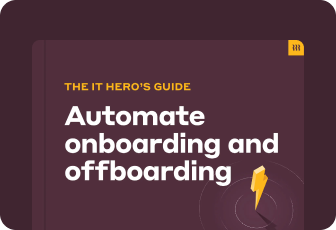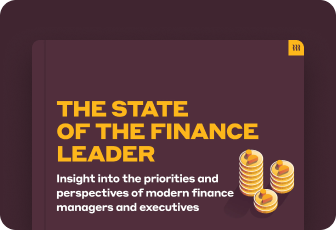
Hire and manage employees in Singapore

Singapore may be small (at least geographically), but it’s home to a highly educated, talented workforce. According to the Singapore Department of Statistics, 63% of the population over age 25 had a college degree in 2023, and in 2020, more than 74% were literate in two or more languages. These are just some of the factors that make Singapore’s workforce so attractive to businesses looking to scale globally.
But hiring in Singapore for the first time can be daunting. The process of finding and onboarding your first employee can be complex and time-consuming, especially if you aren’t familiar with Singapore’s employment laws and regulations. In this guide, we’ll cover the important things employers need to know about the hiring process—like Singaporean labor laws, how to classify workers, what to know about benefits, and more.
Employer of Record (EOR) vs. entity
If you don’t already have a legal business entity in Singapore, you’ll need to choose between setting one up or hiring Singaporean employees through an EOR.
- Legal entity in Singapore: When you set up a local business entity from scratch, there are generally a number of legal requirements involved, like registering with local authorities, opening a local bank account, and consulting with local experts to make sure you stay compliant with Singaporean tax and labor laws.
- Singaporean EOR: An EOR is a third-party service that operates on an employer’s behalf. It handles all the legal requirements for hiring full-time employees in another country, from contracts to payroll and benefits.
Classifying Singaporean workers: Employees vs. contractors
One of the first steps to hiring employees—in Singapore or any other country—is making sure they’re classified correctly. Singaporean courts consider various factors when examining an employment relationship to determine classification:
Contractors
Employees
More control: Contractors should be able to choose when, where, and how they perform their work
Less control: Employees are more often under the direct supervision of their employer, and may be given work hours or a location to perform their duties.
Work performed should not be an integral part of the business.
Work can be an integral part of the business.
Own tools and equipment: Contractors usually provide their own tools, uniforms, etc.
Provided tools and equipment: Usually use company-owned tools, uniforms, etc.
Paid for work done: Contractors are paid upon completion of their work, after invoicing.
Paid at regular intervals: Employees receive regular paychecks, whether they complete their work or not.
Duration of work: Contractors work for a specific period of time, often to complete a project.
Duration of work: Employees have indefinite work agreements that only end when they resign or are terminated.
Exclusivity of services: Contractors can (and often do) work for multiple clients at a time.
Exclusivity of services: Employees typically only have one employer at a time.
Misclassifying employees as contractors comes with serious risks in Singapore. Employers who do so intentionally could end up paying back taxes and penalties up to SGD 50,000.
Work permits for Singaporean employees
The next step is to make sure your new hire is legally able to work in Singapore. Singapore citizens and permanent residents are good to go, but foreign workers need to meet strict work visa qualification criteria and navigate complex immigration laws in order to get work authorization in Singapore.
New hire onboarding checklist
Once you’ve confirmed your new employee can legally work in Singapore, you can continue with the onboarding process. Onboarding sets the stage for their entire tenure at your company, so this is your chance to build a foundation and start off on the right foot.
Successful onboarding starts well before a new hire’s first day on the job—and continues beyond it—so make sure to consider more than just day one logistics. This checklist will set you—and your new hire—up for success.
Before their first day
- Complete a background check (more on this later).
- Send an offer letter (more on this in the next section).
- Do the necessary paperwork.
- Enroll them in benefits.
- Order and configure their devices.
- Set up their access to G-Suite, Slack, Microsoft 365, and any other apps and tools they need for their role.
- Prepare any required literature (like your employee handbook or compliance-related training materials).
- Assign them an onboarding buddy to show them the ropes.
On day one
- Onboard them to payroll to ensure their first paycheck won’t be delayed.
- Make sure their workspace is set up and ready to go.
- Send them a welcome email.
- Give them an agenda so they know what to expect during their first week.
- Schedule a 1:1 with their manager.
- Have a get-to-know-you event with their team.
- Show them around the office (and make sure they know where to find the most important things, like bathrooms and safety equipment).
During their first 90 days
- Provide general and role-specific training.
- Assign work and help them set goals as they ramp up.
- Schedule consistent check-ins (we recommend at least 30-, 60-, and 90-day check-ins).
- Offer regular feedback.
What to include in an offer letter in Singapore
The offer letter is one of the most important parts of a new employee’s onboarding process—it outlines their employment terms clearly to help avoid confusion (and potential legal disputes) later on. Here’s a list of items to consider including in an offer letter for an employee in Singapore to ensure the document clearly communicates the particulars of their new role (though keep in mind that this isn’t necessarily a comprehensive list):
- Their job title, job description, and start date
- The name and role of their supervisor
- Their expected duties
- Details on their probation period, if there is one
- Their expected hours of work (including whether their role is full-time or part-time)
- Their compensation and salary period
- A brief description of their benefits (but avoid going into detail here so the offer letter doesn’t need to be updated if their benefits change)
- Any other details relevant to your company culture
- Your termination policies, including a note that the offer letter does not constitute an employment contract
NDAs and confidentiality agreements in Singapore
A non-disclosure agreement (NDA) is a legally binding contract used to prevent one or more parties from sharing confidential, proprietary company information. NDAs may also be called confidentiality agreements, confidentiality disclosure agreements, and non-disclosure contracts.
In Singapore, NDAs are generally considered to be enforceable, as long as they don’t restrict trade. They cannot be enforced once the information they cover has been publicly disclosed.
Running background checks on Singaporean employees
Not only are background checks allowed in Singapore, but they’re a common way for employers to verify job seekers’ credentials and protect their companies from the risk of certain threats. However, there are a few things employers need to know: Namely, Singapore’s Personal Data Protection Act (PDPA) regulates background checks and requires employers to obtain consent before running any checks and follow relevant guidelines to maintain compliance.
Some of the most important requirements around background checks include:
- The information employers collect from job candidates must be relevant to the purpose for which it is collected.
- Employers must take reasonable steps to make sure data is accurate and stays secure.
It’s also important to note that a few types of background checks are prohibited by law in Singapore:
- Non-consensual background checks: Checking anything in a candidate’s background without getting their consent first violates the PDPA and is illegal in Singapore.
- Discriminatory practices: Collecting or using data in any way that discriminates against candidates based on protected characteristics is against the law.
- Misuse of personal information: Using collected data for any purpose other than the stated background check is illegal.
Here are some of the more and less common types of background checks that companies use when hiring in Singapore:
Common background checks
Less common background checks
Criminal record check
Credit history check
Employment verification
Academic qualifications
Reference check
Paying employees in Singapore
Running payroll can be one of the most challenging parts of hiring international workers. From learning the ins and outs of Singapore’s payroll tax regulations to finding a way to issue timely and accurate remuneration to a global team, this aspect is critical for staying compliant, avoiding financial penalties, and keeping your employees happy.
That’s why you need payroll software. Rippling pays all your employees and contractors around the globe, in their local currencies, while helping your business avoid potentially costly compliance mistakes. That frees up time for you to focus on what helps your business grow and succeed.
Learn more about statutory payroll taxes and contribution rates in Singapore. Note that contribution rates (especially for the Central Provident Fund) can vary based on employees’ age and are updated periodically, so it’s important to check for the most accurate and up-to-date rates with the Singaporean government):
Employer costs
Cost to employers
Tax
Central Provident Fund (CPF)
17%
Skills Development Levy (SDL)
0.25% (capped at SGD 11.25 per year)
Foreign worker levy (if you hire foreign workers)
Varies depending on worker qualifications and how many foreign workers your organization employs
Employee costs
Cost to employees
Tax
Central Provident Fund (CPF)
37%
Income tax
0-24%
Mandatory employee benefits in Singapore
Singapore’s employment laws require employers to provide employees with certain statutory benefits. These include:
- CPF contributions. CPF is a mandatory social security savings scheme funded by contributions from employers and employees to support and meet Singapore citizens and Permanent residents' retirement, housing and healthcare needs.
- Regular work breaks and rest days, equaling at least one day off per week or two days off for up to 12 days of consecutive work.
- Overtime pay of at least 1.5 times the regular pay rate. Overtime is also limited to 72 hours per month.
- Annual leave. Leave entitlements kick in after three months of service. Employees get seven days of leave for their first year of service, then one additional day for each additional year of service up to a maximum of 14 days.
- Sick leave. Employees are entitled to 14 days of sick leave per year, plus up to 60 days of hospitalization leave (inclusive of outpatient sick leave) if their illness meets certain conditions.
- Childcare leave. Parents are allowed six days of childcare leave per year for children under seven if the child is a Singapore citizen, and two days per year if not.
- Maternity leave: Working mothers can take up to 16 weeks of Government-Paid Maternity Leave (GPML) if their child is a Singaporean citizen. Foreign residents can take up to 12 weeks.
- Paternity leave: Working fathers with children born on or after Jan. 1, 2024 can take up to four weeks of Government-Paid Paternity Leave (GPPL). A working partner also has eligibility to share up to four weeks of their wife’s GPML.
In addition to the benefits listed above, employees in Singapore receive 11 paid public holidays each year.
Unlike many countries, Singapore doesn’t have a minimum wage. However, the Employment Act defines a “basic pay rate,” used to calculate how much an employee should be paid if they work on their rest day or a public holiday.
Managing remote employees’ computers and apps
If it’s your first time hiring in Singapore, it can be tough to manage all your employees’ devices while they work remotely—especially if you’re based in a different country. There’s a lot to keep track of—delivering equipment, protecting and updating it from afar, and creating a repeatable process across your international team.
Rippling can help you instantly set up and secure employees’ accounts from day one. Read about setting up and managing remote employee devices overseas in our guide.
Protecting company IP in Singapore
As your new hire gains access to company accounts and potentially sensitive information, it’s important to know how to keep it safe. Singapore’s intellectual property (IP) protection laws are comprehensive and robust. The country’s laws have options for:
- Trademarks: Used by businesses to distinguish their goods and services from those belonging to other businesses, and can be filed with the Registry of Trademarks in Singapore for 10 years of protection.
- Patents: Granted to the owner of an invention of a new product or technical improvement of an existing technology of process, and can be filed with the Registry of Patents in Singapore for 20 years of protection.
- Copyrights: Singapore’s Copyright Law protects films; sound recordings; artistic, musical, and literary works; performances; and television and radio broadcasts. No registration is required to file a copyright—protection is automatically afforded to the owner of the work as soon as they express it in a tangible form.
Complying with Singaporean labor laws
One of the most important parts of hiring in another country is knowing and complying with the relevant labor and employment laws. The Singapore Employment Act and similar employment laws are overseen by the Ministry of Manpower, the National Trades Union Congress (NTUC), and the Singapore National Employers Federation (SNEF), government agencies that help ensure fair employment practices throughout Singapore.
Some key parts of federal law employers need to know are:
- Wage laws: Singapore doesn’t have a minimum wage, but 13th month pay is common.
- Working hours: The standard workweek is nine hours per day, five days per week.
- Central Provident Fund (CPF): The CPF is a social security savings scheme funded by contributions from employers and employees that’s meant to meet Singaporeans’ retirement, housing, and healthcare needs.
- Retirement: The retirement age in Singapore is currently 63, but is set to rise to 65 in 2030.
Terminating employees in Singapore
You may not be thinking about termination as you onboard your new employee. But Singaporean labor laws have certain requirements for termination, so it’s important to familiarize yourself with the regulations before the need arises.
While there aren’t any specific requirements around probation periods, it’s still common for employers to use them. They usually last three to six months.
When terminating employees, federal law requires notice periods determined by the length of employment.
Length of employment
Notice period
Less than 26 weeks
One day
26 weeks to two years
One week
2-5 years
Two weeks
More than five years
Four weeks
Disclaimer: Rippling and its affiliates do not provide tax, legal or accounting advice. This material has been prepared for informational purposes only, and is not intended to provide, and should not be relied on for, tax, legal, or accounting advice. You should consult your own tax, legal, and accounting advisors before engaging in any related activities or transactions.
GLOBAL HIRING
Hire, manage, and pay employees in Singapore with Rippling
Onboard Singaporean employees and contractors in 90 seconds
Set up new hires in Singapore with everything they need, from country-specific training to apps like Slack.
Pay your Singaporean team in Singapore dollars—in minutes
Pay all of your employees and contractors around the world without waiting on transfers or conversions.
Automate your HR compliance work
Avoid costly compliance pitfalls using Rippling’s HR compliance support tools.
Manage HR, IT, and Finance in one system
Juggling multiple systems for your team? That creates silos and busy work. Rippling does it all—in a single system.













































































































